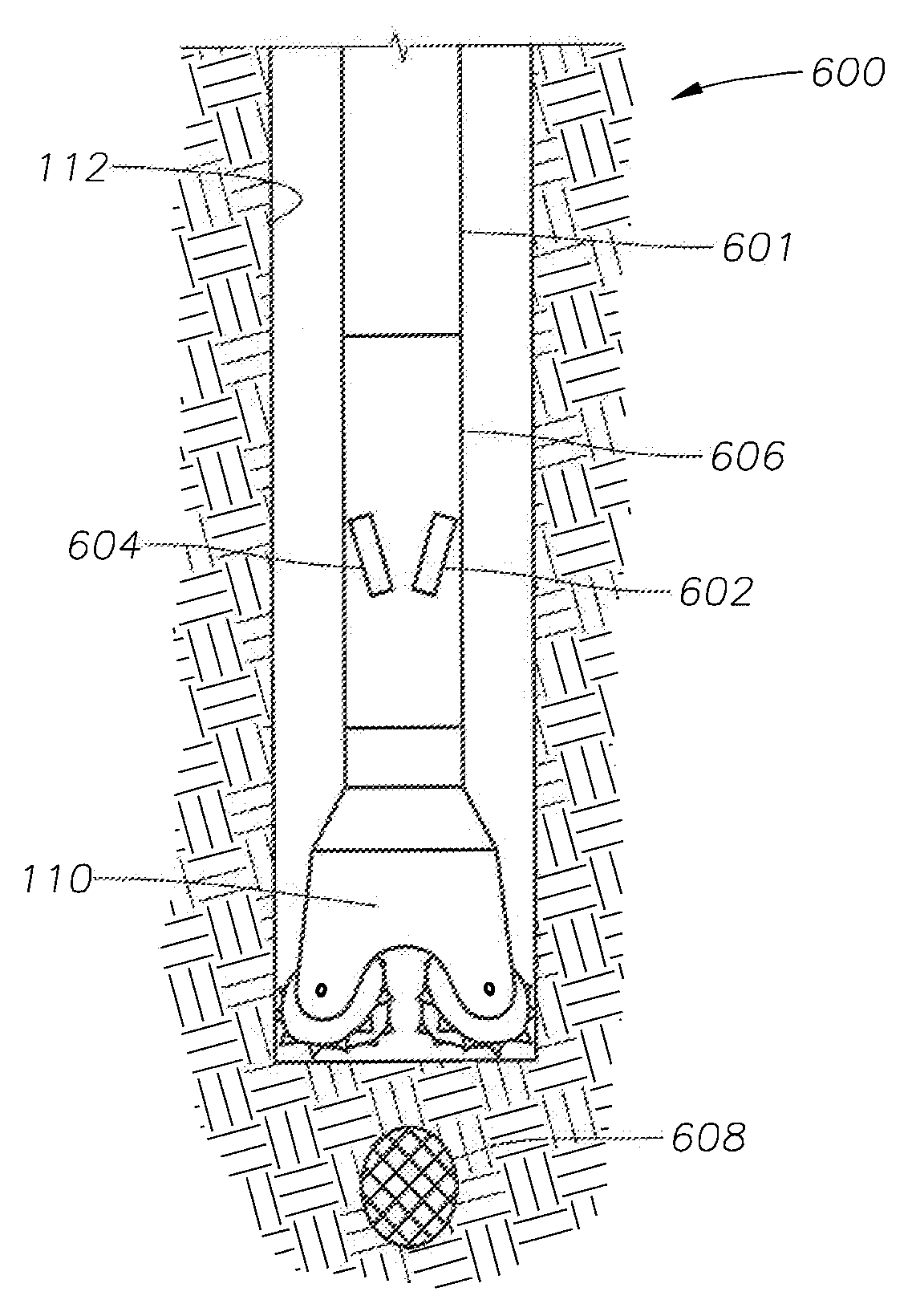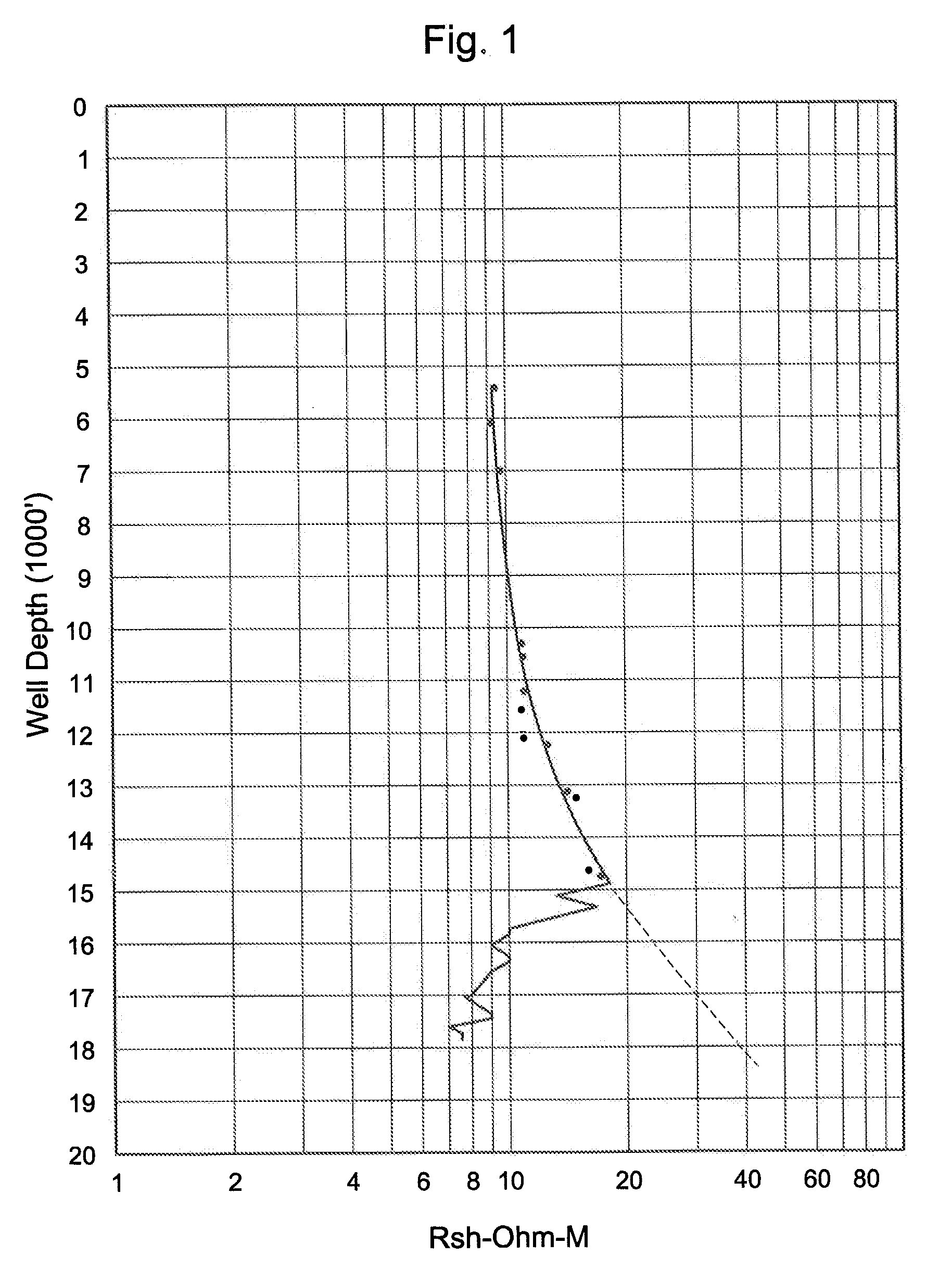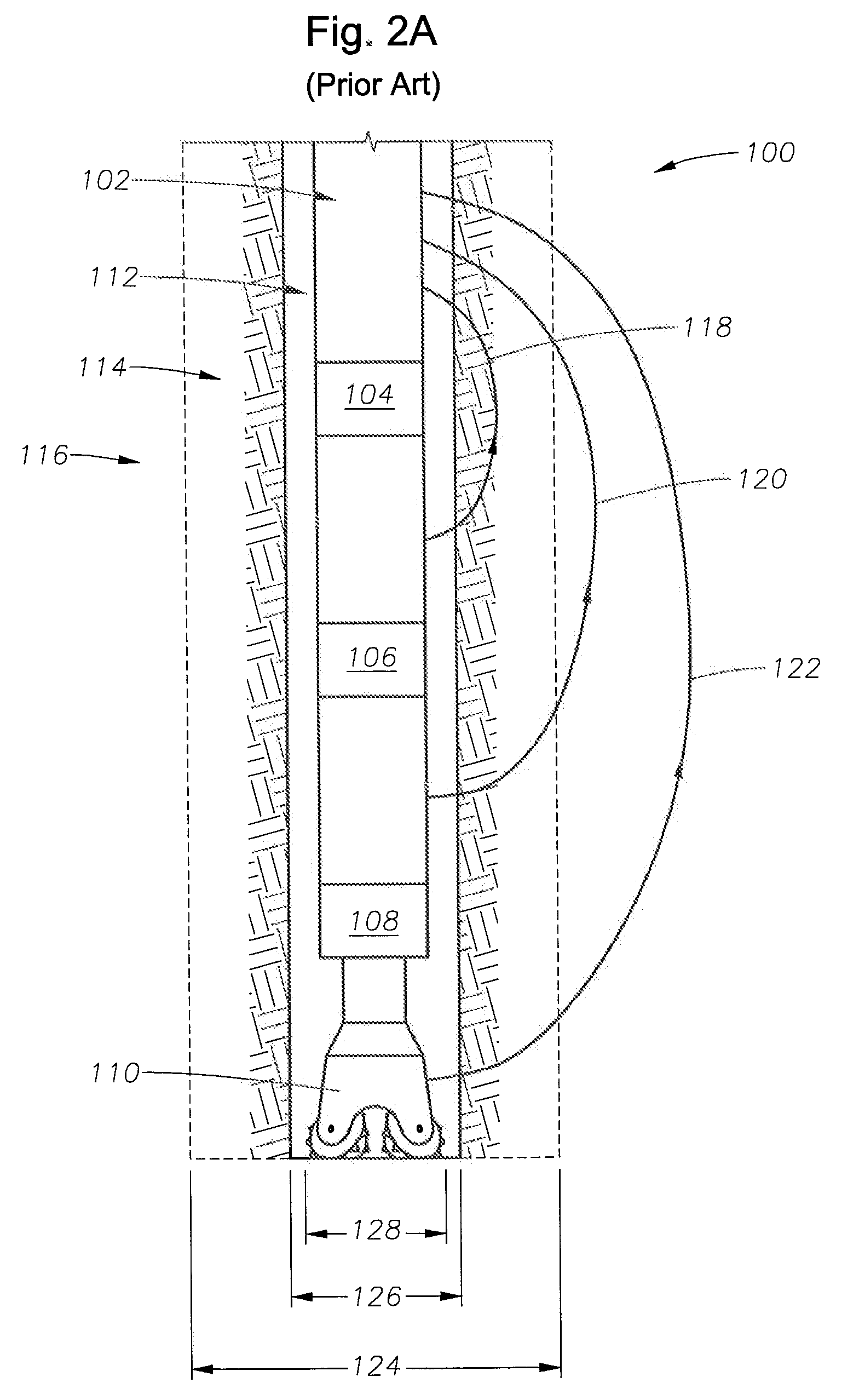Method to detect coring point from resistivity measurements
a resistivity measurement and resistivity measurement technology, applied in the direction of survey, directional drilling, wellbore/well accessories, etc., can solve the problems of not disclosing or suggesting the use of resistivity measurement, reducing the effectiveness or negating the purpose of resistivity measurement, and the coring system in use today is not designed. , to achieve the effect of minimizing the coring
- Summary
- Abstract
- Description
- Claims
- Application Information
AI Technical Summary
Benefits of technology
Problems solved by technology
Method used
Image
Examples
embodiment 300
[0048]In accordance with the present disclosure, as illustrated in FIG. 3A, the lower toroid 130 is placed down at the tip of the bit 110, or very near thereto. In such embodiments the rock being investigated will be increasingly moved forward ahead of the bit 110, as illustrated schematically in FIG. 3B. While this may seem to be a subtle change, the result is much greater ability to focus the resistivity measurements in front of the drill bit, and allow the top of a region of interest for coring to be detected and appropriate preparations made to obtain a whole core sample prior to the bit entering the region. FIG. 3C illustrates a method in accordance with this disclosure, illustrating schematically in embodiment 300 including an offset well 112a from which resistivity data has been previously gathered using conventional methods from a region of interest 90 in the formation previously drilled using drillstring 101 and drill bit 110 (both illustrated in phantom in FIG. 3C). A well...
embodiment 400
[0050]In accordance with the present disclosure, transient electromagnetic survey techniques and apparatus normally used in marine surveys may be modified to be deployed within a well 112, as illustrated schematically in embodiment 400 of FIG. 4. A dipole transmitter 402 is mounted on the drill string behind the drill bit 110, and EM receivers 404 and 406 are mounted below the dipole. The EM receivers 404, 406 measure a normally reflected wave in the axis of the drill string. This normally reflected wave would be off of resistivity contrasts directly in front of the bit. This would work very much like an acoustic VSP but working in the electromagnetic spectrum.
[0051]Another method to make a resistivity measurement in front of the bit would be to use modified continuous deep directional electromagnetic measurements. Deep directional electromagnetic (EM) tool measurements are known and explained, for example, in Omeragic et al., “Deep Directional Electromagnetic Measurements for Optim...
embodiment 800
[0054]FIG. 8 illustrates an embodiment 800 modified to focus energy in front of the bit and measure the formation resistivity ahead of the drill bit. Rather than sensing an oil / water contact, the reflected waves 85 would be reflected off of the top of a region of interest 90, containing perhaps, but not necessarily, hydrocarbons.
[0055]In accordance with the present disclosure, a primary interest lies in using one or more of the methods and apparatus described above to obtain resistivity measurements in front of the drill or core bit to determine a top of a region of interest in the formation in order to obtain a whole core of the region before the bit exposes the formation, which as discussed may create undesirable consequences in the well. The skilled operator or designer will determine which resistivity method and apparatus is best suited for a particular well and formation to achieve the highest efficiency without undue experimentation.
[0056]Useful drilling muds for use in the me...
PUM
 Login to View More
Login to View More Abstract
Description
Claims
Application Information
 Login to View More
Login to View More - R&D
- Intellectual Property
- Life Sciences
- Materials
- Tech Scout
- Unparalleled Data Quality
- Higher Quality Content
- 60% Fewer Hallucinations
Browse by: Latest US Patents, China's latest patents, Technical Efficacy Thesaurus, Application Domain, Technology Topic, Popular Technical Reports.
© 2025 PatSnap. All rights reserved.Legal|Privacy policy|Modern Slavery Act Transparency Statement|Sitemap|About US| Contact US: help@patsnap.com



